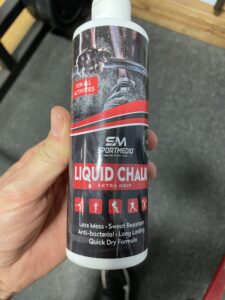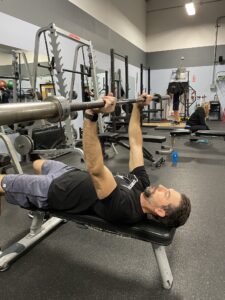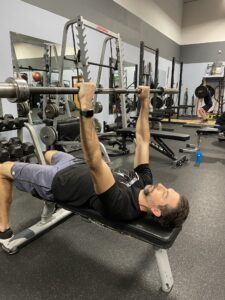Grip training should be an important piece to any OCR Training Plan. There are many resources out there and cool exercises you can do that will help with different grips. I actually have a free videos series going over some key exercises to improve your grip here: https://ocr-underground.newzenler.com/fp/welcome-video
The focus of this post, however, is to cover some key areas that many are missing out on. You really don’t need to add too much extra grip work in, if you are focusing on a few key things during your normal training.
Here are some things to really focus on during your next workout.
1. Ditch the Chalk and the Straps
 I am biased a little here. I just hate chalk. I hate how it feels and mostly I hate the mess it makes in our studio. You can’t keep things clean if you use chalk. It is impossible. And then there are hand prints on everything you touch. Ok sorry for the rant. Other than the mess, using chalk is essentially saying you know your weakest part of an exercise is your grip so you are going to cheat so you can lift more. Straps do the same thing. Now I understand if you are trying to lift max effort loads and want to push it on that end. Using chalk and straps might be completely appropriate. But they should not be a normal piece of your training routine. Sure there might be a few exception, but for most, stop using these to help lift heavier. Instead toughen your hands up and build your grip without using any assistance here.
I am biased a little here. I just hate chalk. I hate how it feels and mostly I hate the mess it makes in our studio. You can’t keep things clean if you use chalk. It is impossible. And then there are hand prints on everything you touch. Ok sorry for the rant. Other than the mess, using chalk is essentially saying you know your weakest part of an exercise is your grip so you are going to cheat so you can lift more. Straps do the same thing. Now I understand if you are trying to lift max effort loads and want to push it on that end. Using chalk and straps might be completely appropriate. But they should not be a normal piece of your training routine. Sure there might be a few exception, but for most, stop using these to help lift heavier. Instead toughen your hands up and build your grip without using any assistance here.
2. Pay Attention To Your Wrist Position
This happens during a few exercises, but I most commonly see during bench pressing. We often see the wrist bend during barbell or DB benching like you see in the picture here. This position many feel stronger and can handle more weight. But again this is likely away to get around a weak grip. Instead when you keep a neutral grip you can now better stabilize the wrist using these important grip muscles. I think the important thing to understand is that you probably won’t be able to lift the same amount of weight if you do this. And that is ok. You can continue lifting more weight, not improve your grip, and possible hurt your wrists in the long run, or you can lower the weight and do it better. The weight will bounce back up eventually and you will have a much stronger grip in the process. Pay attention to how you hold any weight during any exercise. If you can keep a neutral wrist, you probably should.


3. Grip The Weight Don’t Just Hang On
This is really adding on to the second point. Be intentional whenever you are holding something. Don’t just hang on to it with minimal effort. I see this a lot during farmer carries or lunges where DB’s are held at the side. During lunges you see the front of the DB’s dip down lower than the back. Again you have a poor wrist position that effects grip. Instead squeeze the weight and crush the handle. Try and think about your your pointer finger and pinky finger wrapping around the bar strong. Many miss that pinky finger. That can often lead to elbow issues when there is an imbalance in these muscles.
It is also really common during carries especially when the goal turns into how fast you can complete it. Now, in a competition you should do whatever you need to do in order to get through as fast as you can. But the rule should be different for training. Instead slow down and use the same grip mentioned above. Don’t let the front of the DB’s drop forward. It may slow you down but it will improve your grip better and keep those wrist safer. This video shows the difference in the grip position during carries.
Hopefully this gives you some great starting points to help improve your grip without ever incorporating any new exercises. Once you have these down, then adding in grip specific drills will be that much more effective.

